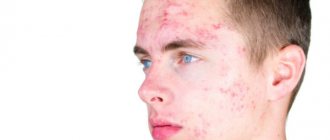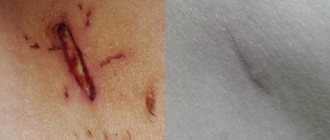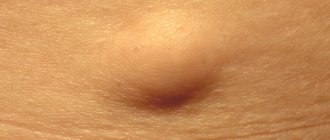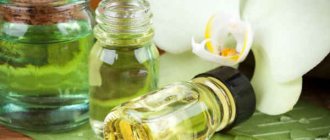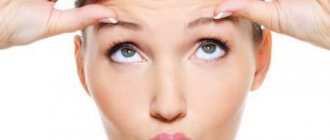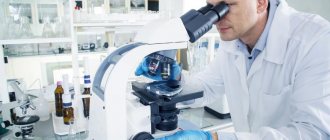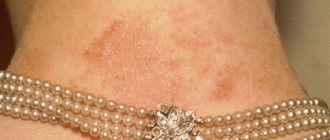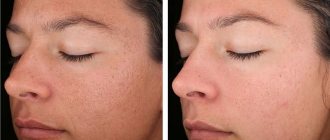Author Vladan Djuric
Updated: 01/31/2020 22:33 Published: 12/19/2019 23:27
Health » Health and prevention
Typically, redness of the face is associated with increased emotionality, excitement, and also occurs when eating spicy food. Doctors talked about the symptoms of a red face and how to deal with this phenomenon.
Rosacea. Why is my face red?
Facial redness is common in both men and women. Moreover, in women, redness can be caused by menopause.
Doctors consider redness to be a normal phenomenon, or rather a reaction to external factors. The face becomes red due to dilation of the blood vessels of the circulatory system. Blood begins to flow faster, and the face acquires a characteristic reddish color.
Causes of redness
Redness is associated with vasodilation as a result of increased blood flow, the regulation of which is controlled by two main factors - hormones and nerve impulses. Hormones such as adrenaline bind to nerve cells in the walls of blood vessels and can cause an immediate change in the diameter of the vessels.
Small muscle cells contract to narrow the vessel (vasoconstriction) or relax to widen the vessel (vasodilation). Expansion occurs in the event of a lack of oxygen, nutrients, or an increase in body temperature and is a secondary reaction.
Redness of the facial surface occurs with vasodilation, while vasoconstriction causes blanching of the skin.
Inflammation of the face can be permanent, as with rosacea, or it can be temporary, as a reaction to irritating factors. The causes leading to redness are divided into exogenous, caused by the external environment, and endogenous, based on internal sources.
Exogenous or physiological causes include:
- temperature changes in the atmosphere;
- severe frost or cold wind;
- photodermatitis;
- increased physical activity;
- stress, emotional distress;
- excess alcohol in the body;
- medications;
- eating spicy food;
Redness on the face, which can be removed, is associated with physiological processes, but getting rid of redness that has arisen as a symptom of a skin or internal disease is much more difficult.
Redness can be caused by diseases:
- allergies;
- rosacea;
- diabetes;
- atherosclerosis;
- disorder in the gastrointestinal tract;
- alcohol intoxication;
- menopause;
- heart diseases;
- high blood pressure;
- liver cirrhosis;
- endocrine disorders;
- skin diseases;
- immune disorders.
Cheeks turn red more often in women than in men, especially those with fair skin. Aesthetically, this is perceived positively, but is often associated with internal disorders.
Tips from cosmetologists
Masks against redness of the skin on the face are undoubtedly an effective way to eliminate various imperfections of the skin. However, you should not forget about additional care, without which the mentioned redness will return. To prevent this from happening, you should consider useful tips from leading cosmetologists:
- Give preference exclusively to high-quality cosmetic products. It is especially important to take the time to review the contents of your cosmetic bag, getting rid of all expired products and replacing them with new ones. You should choose hypoallergenic products that do not contain acetone or alcohol.
- Review your diet by including foods rich in fiber and vitamins in your menu. Heavy foods, citrus fruits, chocolate, as well as smoking and alcohol should be avoided.
- Regardless of the time of year, you should use a protective cream.
- You should make sure that the red spots are not a side effect of any medications.
Advice. It is useful to follow the described rules one by one. This way it will be easier to understand which factor provokes the appearance of redness. In parallel with internal cleansing, it is useful to start using masks to improve the condition of the skin externally.
Possible diseases
Redness of the skin is observed with malar erythema. The cause of the appearance of a red rash in the cheekbone area can be hot weather, pregnancy, stressful situations, or the ovulation period. Photodermatitis, or sun allergy, also causes facial redness due to the skin's hypersensitivity to sun exposure.
Types of redness on the face:
- redness on the cheeks and bridge of the nose;
- spider-shaped blood vessels, especially in the cheeks and nose;
- rough red pimples accompanied by itching and tingling;
- thickened red skin around the nose, on the forehead.
Skin diseases cause hyperemia, which is accompanied by raised plaques, papules, peeling, and dryness. Some skin lesions, rosacea, acne dermatitis, are characterized by excessive redness.
Diseases that cause the face to turn red:
- Juvenile acne or acne. A disorder that occurs during puberty as a result of increased activity of the sebaceous glands. On sensitive skin, in addition to acne, redness, dryness, and irritation develop.
- Acne rosacea. A chronic skin disease that has cycles of relapse and remission. Occurs more often in women with white skin. It is characterized by redness in the central part of the face, purulent pimples, and increased skin temperature in the area of inflammation.
- Atopic dermatitis. An inflammatory disease of the skin not only of the face, but also of the body, accompanied by red papules, itching, and peeling.
- Cuperosis. When the disease occurs, blood circulation in the facial area is disrupted, causing damage to small capillary vessels that are located closer to the surface of the skin. The capillary pattern becomes clearer over time, and stripes of capillaries are visible. Associated symptoms are itching, tingling, burning. Over time, the vessels, expanding more and more, are unable to contract normally. The disease develops in stages. At stage 1, hyperemia occurs for no apparent reason, periodic sensations of “hot flashes” on the skin of the face. At stage 2, a clear picture of the vascular pattern is visible. During stage 3, the disturbance of local circulation becomes chronic, and the possibility of developing inflammatory reactions increases.
Redness on the face due to rosacea will progress to rhinophyma
Doctors associate the appearance of rosacea, the most common cause of redness, with taking hormonal contraceptives, replacement therapy for endocrine system disorders, and pregnancy. There is also a connection between the appearance of rosacea and diets, bad habits, and frequent consumption of coffee and chocolate.
Redness on the face, which can only be removed by curing the underlying disease, is often caused by infections, both systemic and local:
- Erythema infectiosum. The cause of the disease is parvovirus B19. The red rash on both cheeks has a clear pattern in the form of a slap mark. Simultaneously with the lesion on the face, the rash appears on the arms and legs. The disease rarely occurs in people with a healthy immune system.
- Scarlet fever. A red skin rash appears simultaneously with a sore throat. When the disease occurs, small red bumps appear on the skin, resembling sandpaper; the skin on the arms and legs is not affected. Another symptom is a bright red tongue.
- Streptococcal pharyngitis. Inflammation of the oral mucosa caused by infection. The disease is characterized by the appearance of a red rash.
Immune disorders affect the appearance of hyperemia in the facial area:
- Allergy. This may be a reaction to cold, and in addition to redness, dryness, peeling, and itching of the skin appear. The body's response to foods and plants manifests itself not only on the face, but also on the body and hands.
- Menopause. A decrease in the production of female sex hormones, estrogen and progesterone, affects the body of women. Menopause symptoms: facial flushing, frequent urination, insomnia, depression, can last for years depending on your health.
- Drug-induced and discoid lupus. In the dosage form, a red, butterfly-shaped erythema develops on the cheeks under the influence of long-term use of sulfonamides, antibiotics, and neuroleptics. With the discoid form, red scaly spots appear on the skin of the face, which can subsequently lead to atrophy of the facial skin.
- Cluster headaches. They occur in a series of attacks lasting no more than 15 minutes. Attacks may recur from several weeks to several months. Characteristic symptoms: flushing of the face, the appearance of tears, blockage of the nasal area, acute headache.
Endocrine disorders affect color changes:
- Hyperthyroidism. An active thyroid gland causes symptoms due to a high metabolic rate: high blood pressure, sweating, redness on the face, brittle hair, weight loss, menstrual irregularities. Frequent and severe facial redness in people with hyperthyroidism occurs in the summer.
- Cushing's syndrome. The disorder is caused by excess cortisol in the body. The typical manifestation is a round face with increased hyperemia, which is especially noticeable on the cheeks. Additional symptoms include acne, muscle weakness, high blood pressure.
Cardiovascular diseases and blood diseases affect changes in complexion:
- Mitral valve stenosis. When the valve lying between the left atrium and the ventricle narrows, blood accumulates in the vessels that carry it from the lungs and back. In addition to the red face, other symptoms occur: cough, sometimes with blood, shortness of breath, dizziness.
- High blood pressure. When the heart works faster, the blood vessels narrow and the muscles contract, which leads to increased blood pressure. One of the symptoms is facial redness, other signs: shortness of breath, puffiness, memory impairment, and vision.
- Aging, obesity. Processes that affect the state of the vascular system, changes in blood circulation.
Vitamins and medications can cause redness on the face. You can remove hyperemia by refusing to take them or reducing the dosage.
Drugs that affect color change:
- vitamin B3 and all supplements including cyamine;
- glucocorticoids;
- calcium channel blockers;
- cholinergic drugs;
- opiates;
- thyrotropin;
- cyclosporine;
- doxorubicin.
People dependent on steroid medications often complain of redness, severe itching, burning and rash not only on the face, but throughout the body. This is especially true for those who use acne medications and anabolic steroids.
People suffering from agoraphobia, or panic attacks, experience intense redness in the face during an attack.
What do they indicate?
For example, if inflammation begins to appear on the forehead and along the hairline, then in this case we are most likely talking about problems with the gastrointestinal tract. If the rash is predominantly localized around the eyebrows, then it is worth checking the intestines. Numerous pimples on the bridge of the nose indicate that the patient's liver is too overloaded. In this case, treatment of inflammation on the face may be limited to diet. It is recommended to stop eating smoked, salty, fatty and sweet foods. It is worth eating less flour products.
When inflammatory processes appear in the lip area, we can talk about problems with the digestive system. Acne can also be localized on the chin. As a rule, this indicates that a person’s immune system has weakened or he suffers from chronic fatigue, as well as from constant lack of sleep. However, acne can appear anywhere on the face if it is associated with age-related changes or pregnancy.
Speaking about how to get rid of inflammation on the face, you should first of all visit a specialist who can determine the exact cause of the formations. Depending on this, he may prescribe medical treatment. If we are talking about a mild form of the disease, then you can get rid of it with the help of several high-quality drugs.
Diagnostics
The skin is examined visually. The doctor will then conduct a survey. He must find out what the patient’s profession is, whether it affects the developing redness, whether the person is taking medications and what kind, whether there have been skin diseases in the past.
After collecting anamnesis, the person will be referred for examination, if necessary. It is suggested to test by scraping the skin, undergo testing for allergens, and take general blood and urine tests.
When to see a doctor
In most cases, there is no need to see a doctor about facial redness. The condition can be controlled and treated on your own.
If redness is accompanied by warning symptoms, then you should seek help from medical professionals:
- acne appeared;
- side effects occurred in the form of skin itching, peeling, suppuration of rashes;
- redness lasts for a long time;
- are bothered by frequent headaches;
- swelling in the mouth or throat;
- redness spreads to other areas of the body;
- signs of gastrointestinal dysfunction appeared.
Treatment of inflammation on the face
You can eliminate and relieve inflammation on the face using various methods. The most reliable and effective is the one recommended by a doctor (therapist, dermatologist, cosmetologist, etc.). Medicinal anti-inflammatory drugs should never be used independently, without consulting a specialist. Salon procedures also often eliminate inflammation for a long time, and also have a positive effect on the general condition of the skin.
Medications
- Brewer's yeast;
- antibiotics (tetracycline, synthomycin, erythromycin) both in the form of tablets and ointments for external use;
- antibacterial ointments: streptocidal, sulfuric, zinc, ichthyol;
- furatsilin for washes and lotions;
- Activated carbon;
- multivitamins.
Beauty salon treatments
- Ultrasonic facial cleansing is the safest and most effective way to get rid of inflammation on the face;
- peeling is allowed only for minor inflamed rashes;
- Ozone therapy allows you not only to get rid of pimples and acne, but also to improve your complexion and smooth out the first wrinkles;
- mesotherapy is expensive, but one of the most effective procedures against inflammatory reactions on the face, when a therapeutic cocktail is injected under the skin;
- Laser facial cleansing in its essence and results is very similar to ultrasonic peeling;
- Cryotherapy in this matter is not suitable for everyone, since different skin does not respond equally to treatment at low temperatures;
- Darsonvalization - cleansing the skin of inflammation using microcurrents also often becomes a completely successful procedure.
After examination, doctors in the hospital and cosmetologists in the beauty salon will tell you how to remove inflammation on the face quickly and effectively, as well as with minimal losses to health. This will help avoid complications and side effects. At the same time, you can carefully try several folk remedies against acne and acne.
Prevention
To make your face happy with its natural color, you should follow simple rules:
- To refuse from bad habits. Smoking and alcohol thin the walls of blood vessels.
- Review your lifestyle and diet. Strengthen your body, consume more fruits, vegetables, healthy fats, drink more water.
- Increase vascular tone on the face. Strengthen blood vessels with contrast washing, exercise, and avoid hypothermia.
- Avoid exposure of skin to sunlight in unacceptable amounts. In summer, take care of your skin with sunscreen and moisturizers. Sunburn cream must have at least 30 SPF.
- Use protective equipment in winter. Moisturize the skin, nourish it, do not overdry it.
- Use high-quality cosmetics and hygiene products.
- Use cosmetic procedures with caution.
- Eat foods containing vitamin P (carrots, peppers, parsley), C (lemon, onion, garlic), K (spinach), D (dairy products).
- Drink at least 1.5 liters of liquid per day, excluding coffee, tea, and tonics.
The face is red and peeling: what to do
If unpleasant symptoms appear, until the cause is identified, you need to follow a number of recommendations to help not aggravate the problem:
- At the first signs of peeling on the face, accompanied by hyperemia, you should refrain from using decorative cosmetics. Powders and viscous foundations can dry out the skin and increase the rejection of the stratum corneum.
- Do not use antibacterial soaps or cosmetics containing alcohol. After washing, use soft towels and apply moisturizer.
- Wash with warm or cool water. Hot water promotes the expansion of pores and loss of moisture in the cells of the dermis.
If the redness intensifies and is accompanied by itching, the dermis is treated with anti-inflammatory ointments.
Drug treatment
Medicines are prescribed taking into account the cause, the severity of clinical signs and individual characteristics.
- Initially, the moisture level in the dermis is restored using humectants in the form of creams and ointments: Locobase, Vaseline, Keratolan. The products create a waterproof film and restore the barrier function of the dermis.
- Dermatotropic agents, regenerants and reparants stimulate regeneration, restore metabolic processes: Dextpanthenol, Bepanten.
- To eliminate hyperemia and itching, use antihistamine gels: Fenistil, Dimetinden.
- To eliminate a fungal or bacterial infection, Skin-cap and Friederm zinc are prescribed.
- If symptoms are severe, glucocorticosteroids are recommended: Rederm, Belosalik.
Multivitamins and vitamin-like products for the dermis are prescribed in combination with medications. They compensate for the deficiency of low molecular weight organic compounds: Perfectil, Panthenolspray.
Nutrition and vitamins
Proper nutrition is the basis for the health of the whole body. To maintain water balance at the desired level, you should consume up to 2 liters of water per day. This volume of fluid replenishes losses and helps eliminate harmful substances. affecting the condition of the epidermis.
Be sure to read:
Proven masks for dry skin: how to prepare at home
It is recommended to exclude salty, fried foods and allergy-causing foods from your diet. Consume chocolate and cookies in moderation. For normal health, copper, zinc, cobolt, and vitamins are needed. Cyanocobalamin (vitamin B12) is responsible for the growth and renewal of epidermal cells, ascorbic acid is involved in the formation of collagen.
Vitamins A and E are components of cell membranes; with their deficiency, epithelial damage develops. Low molecular weight compounds are found in large quantities in greens, sea fish, cereals, and less in fruits.
Folk remedies
Folk remedies help eliminate hyperemia and increased rejection of the surface layer of the dermis:
- Honey-oil mask. Heat a tablespoon of honey in a water bath. Add Art. l. apricot, peach and olive oil of your choice, mix thoroughly. The resulting composition is applied for 10 minutes.
- Aloe mask. In Art. l. squeeze out aloe juice and mix with jojoba oil. The mixture is distributed with massaging movements and left for a quarter of an hour.
The procedures are performed daily; if there is no effect, the masks are canceled and contact a dermatologist.
Treatment methods
Etiotropic therapy consists of treating the root cause. Treatment of symptoms is necessary to reduce or remove severe symptoms not associated with internal disorders. Treatment tactics involve the use of not only medications, but also physiotherapeutic and caring procedures that protect the skin from external factors.
Medications
Redness on the face can be removed using the following products:
- keratolytic, which gently cleanse the skin, remove scales, and prevent further clogging of pores;
- anti-inflammatory, reducing existing inflammation;
- antibacterial;
- adsorbents.
Before using the products suggested in the table, you should consult a dermatologist. Resolving skin redness depends on the underlying cause, which needs to be determined.
| Effect of the drug | Name | Price in rub. |
| Anti-inflammatory | Advantan | 500 |
| Afloderm | 230 | |
| Elokom | 100 | |
| Keratolytic | Roaccutane | 1600 |
| Differin | 700 | |
| Belosalik | 200 | |
| Baziron | 600 | |
| Lorinden | 350 | |
| Antibacterial | Skinoren | 600 |
| Belogent | 130 | |
| Hyposol | 1100 | |
| Tea tree oil | 100 | |
| Absorbents | White clay | 30 |
The products used should not contain alcohol, so as not to dry and irritate the skin. It is better to select tonics based on juniper, chestnut, and hops.
Useful vitamins for facial skin:
- Vitamin D increases protective properties and regenerates the skin.
- Vitamin K, anticoagulant, helps with vascular defects, brightens the skin.
- Vitamin E, an antioxidant, restores damaged cell membranes.
- Vitamin A accelerates healing, supports collagen synthesis, and has a positive effect on the immune system.
- Vitamin C strengthens capillary walls and slows down skin aging.
When treating rosacea, heparin ointment helps well; the course of treatment should not exceed 1 week. Oxymetazoline cream and laser treatment help with rosacea.
Traditional methods
Facial redness can be controlled with detergents and warm water. Cold makes the skin even more inflamed and irritated. You can wash your face using lotions and cleansers, for example, from the company Klerasil.
Products based on:
- witch hazel;
- mint;
- eucalyptus;
- carnations.
You can use masks based on green tea, turmeric, cucumber, and ginger.
Aloe pulp is good for soothing irritated skin:
- Remove the pulp from the core of the leaf and apply to your face.
- Perform the procedure 2 times a day
Mask based on coconut oil, a natural emollient product that retains moisture in the skin:
- Soak a swab in oil and wipe your face.
- Leave until dry, then rinse with warm water.
Oatmeal mask:
- Grind pure oats to flour, mix with milk or water.
- After the oats have absorbed all the liquid, apply the mixture to your face.
- The procedure can be carried out every day, applying the mask for 20 minutes.
Cucumber mask:
- Fresh cucumber, peeled, cut into discs.
- While lying down, place cucumber slices on your face. Keep for at least 20-25 minutes.
- It is not recommended to rub the pulp into the skin so as not to cause irritation.
Green tea lotion:
- Brew green tea. Let it brew.
- After brewing, while the drink is still warm, pour the tea into a wide bowl and soak a cotton napkin in it.
- After wrung out the fabric, apply it to your face and leave for 10-15 minutes.
- You should not actively rub tea into the skin so as not to irritate it.
A non-comedogenic sunscreen applied to the skin helps.
Other methods
Redness on the face can be removed with peeling. For irritated skin, it should be gentle, properly regulating the exfoliation of the surface layer.
- Glycolic peeling . The glycolic acid molecule is very small, so it quickly penetrates the epidermis without causing irritation.
- Lactic. Lactic acid whitens the skin, brightens and strengthens the walls of blood vessels.
- Peeling with retinolic acid. This is the most superficial, gentle peeling that is gentle on the skin.
To strengthen blood vessels, we can recommend PQ Age peeling based on trichloroacetic acid. After it, a whitening, rejuvenating effect is created with minimal exfoliation.
Electroporation sessions with glycolic acid will help restore the functioning of capillaries and epidermal cells.
For hormonal disorders that occur during menopause, you should strengthen the immune system, do yoga, exercise, and massage. To strengthen the nervous system, take antidepressants: Paroxetine, Venlafaxine.
The proposed techniques will reduce the wave of “hot flashes” that affect the redness of the face.
Disinfectant mask
To prepare such a remedy, you will need a small spoon of white clay purchased at the pharmacy. The same amount of talc is added to it. The finished powder is thoroughly mixed and 2 tablespoons of low-fat milk are added to it, which can be replaced with kefir. The resulting mass must be whipped until a kind of cream is obtained. This mask is applied to the entire face for about 15 minutes. It is recommended to perform this procedure several times a week. However, it is not necessarily done in order to get rid of inflammation. Often such procedures are used as prophylaxis.
You can also make soothing lotions from essential oils. For example, tea tree oil has an excellent anti-inflammatory effect. It also disinfects the skin. This will prevent the irritation from spreading. You can buy essential oil at any pharmacy. It's inexpensive.
Possible complications
Many causes of facial redness are not related to systemic diseases and do not threaten life or health. In many cases, they present aesthetic problems that can be resolved on your own or by following the advice of a doctor. If there are spider veins on the face, it is advisable to conduct an examination to exclude various pathologies.
In some cases, in order to stop the process of damage to the deep layers of the skin along with blood vessels, it is necessary to carry out a course of restorative treatment and skin nutrition in order to prevent premature aging and sagging of the skin.
If the redness on the face is not associated with an illness, then you can remove the redness yourself or in a beauty salon. But in any case, it is wiser to consult a dermatologist so as not to harm your skin.
Author: Belyaeva Anna
Article design: Vladimir the Great
